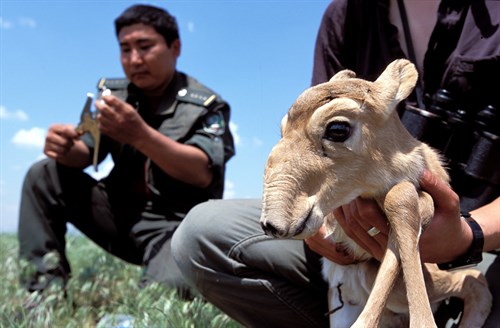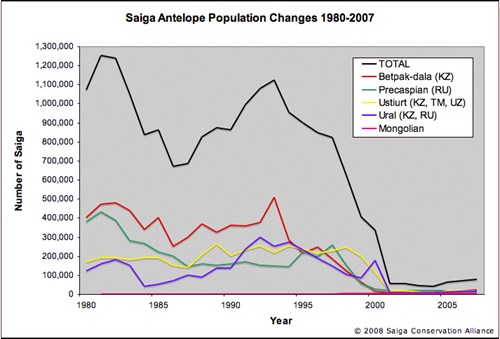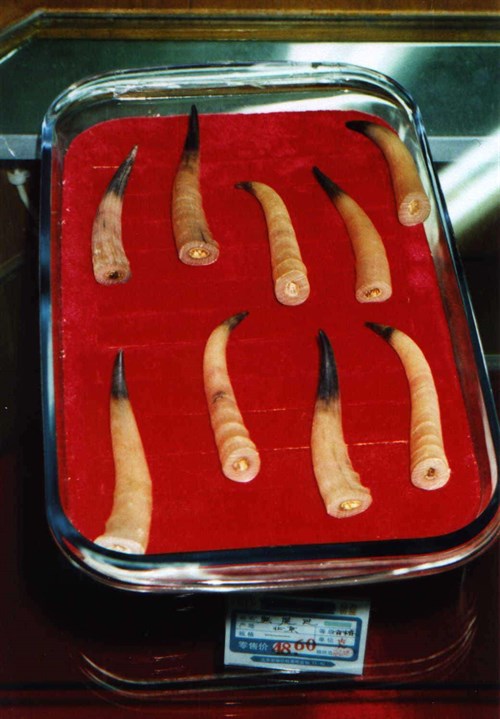
历史上,赛加羚羊是欧亚平原、半沙漠地区常见的物种之一。然而,随着苏联解体以及随后的社会经济动荡,赛加羚羊的数量遭遇了急剧的下降,在十年之间减少了超过90%,该物种因此被世界自然保护联盟(IUCN)红色名录列为极危物种。赛加羚羊数量急剧下降的原因主要是过度捕猎,一是羚羊角关于中药材的出口,二是本地区的羚羊肉的消耗。
在赛加羚羊分布区域内很多机构和个人都在保护该物种。包括最佳实践科学、国际研究和出版、监控和圈养繁殖计划、全球倡导和筹款、分享赛加羚羊栖息地的社区教育及外展项目的就地保护和迁地保护工作。这些努力促使某些种群得以稳定甚至复苏,虽然该物种的种群数量与历史记录相比仍然处于非常低的水平。

Population graph - 1980-2000 data from Milner-Gulland et al. (2001); 2001-2007 estimates from CMS Overview; 2003-2007 Kazakhstan data from Duisekeev & Sklyarenko (2008).
In each of its range states, committed bodies and individuals are working towards preserving the saiga antelope. This includes both in-situ and ex-situ conservation informed by best-practice science, international research and publication, monitoring and captive breeding programmes, global advocacy and fundraising, and education and outreach projects in communities that share saiga habitat. These efforts have led to the stabilisation and even recovery of some populations, although the species remains at very low numbers compared to historical levels.

